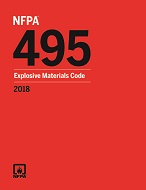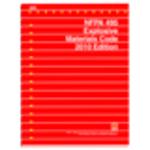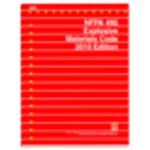Click here to purchase
Control hazards when handling explosives using new requirements in the 2018 edition of NFPA 495: Explosive Materials Code.
NFPA 495: Explosive Materials Code identifies reasonable levels of safety for the manufacture, transportation, storage, sale, and use of explosive materials, including blasting agents, water gel and emulsion materials, smokeless propellants, black powder propellants, and small arms ammunition. NFPA 495 does not apply to transportation of such material used for military purposes or when under jurisdiction of the federal government.
Important changes in the 2018 edition address electrical wiring.
Updates to Chapter 5 requirements in the Electrical Wiring and Equipment section provide better guidance on where to design and install watertight and dusttight equipment when in proximity of explosive materials.
Additional updates help improve blasting protocols.
Changes in Chapter 10, Use of Explosive Materials for Blasting, added responsibilities for the blaster-in-charge to prevent potential conflict with project manager responsibilities. Additionally, Chapter 10 adopted requirements for recording blast records to better align with federal and state regulations.
Compliance with this important Code is essential for explosives manufacturers; small arms manufacturers, distributors, or retailers; or enforcers such as fire and building officials.
Product Details
- Published:
- 11/30/2017
- ISBN(s):
- 9781455919239
- Number of Pages:
- 69


